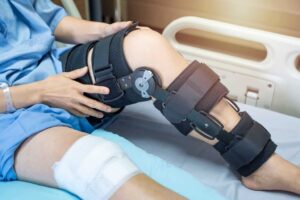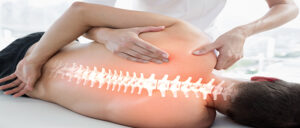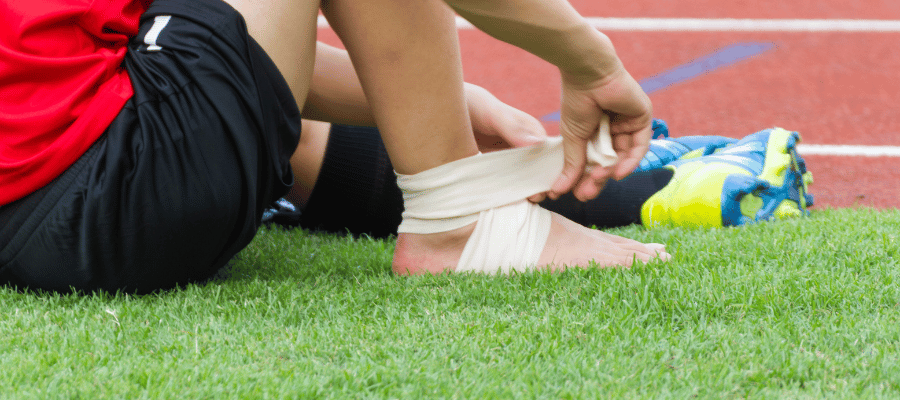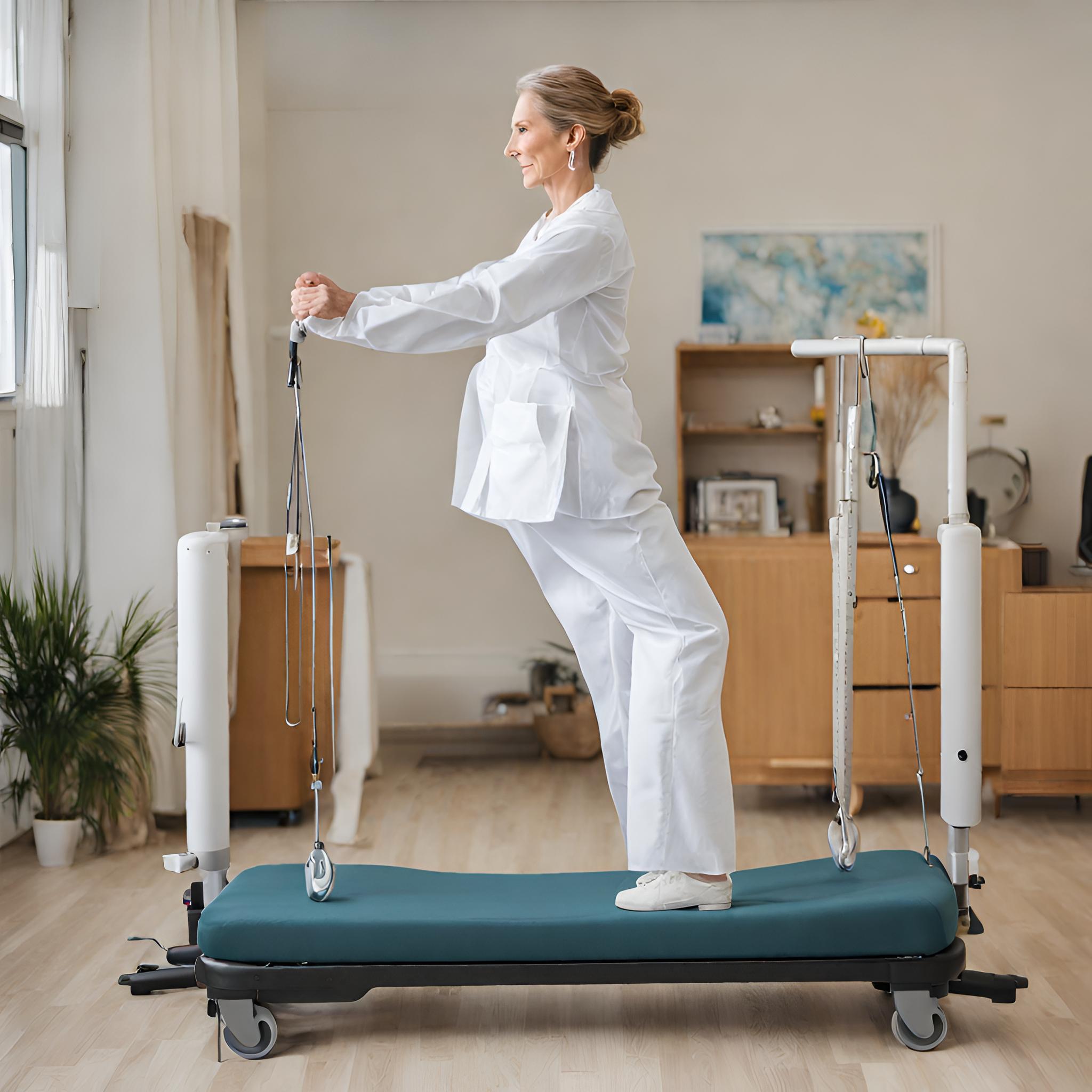Floating Knee
Table Of Contents
- Introduction
- What is a Floating Knee?
- Types of Floating Knee Injuries
- Complications of Floating Knee Injuries
- Management of Floating Knee Injuries
- Conclusion
Introduction
A floating knee is a severe injury involving fractures of both the femur (thigh bone) and tibia (shin bone) in the same leg, creating a “floating” joint. This condition, usually caused by high-energy trauma such as car accidents or falls from significant heights, was first described by Blake and McBryde in 1975. It represents a rare and complex injury requiring prompt and specialized treatment to prevent severe complications.
What is a Floating Knee?
A floating knee results from simultaneous fractures of the femur and tibia on the same leg, leading to a flail knee joint characterized by instability due to damaged supporting ligaments. This instability can cause pain, swelling, and difficulty in movement. The high incidence of open fractures, vascular injuries, and nerve damage makes this condition particularly challenging to manage.
Types of Floating Knee Injuries
Floating knee injuries have been classified using various systems to better understand and treat the condition. Here are some key classification systems:
Blake and McBryde Classification
- Type I: Fractures of both shafts of the two long bones.
- Type II-A: Fractures involving the knee joint.
- Type II-B: Fractures involving the hip or ankle joints.
Letts-Vincent Classification (Pediatric)
- Type A: Two closed diaphyseal fractures.
- Type B: One closed diaphyseal and one metaphyseal fracture.
- Type C: One diaphyseal and one epiphyseal fracture.
- Type D: At least one open fracture.
- Type E: Both fractures are open.
Bohn-Durbin Classification (Pediatric)
- Type I: Double shaft fractures.
- Type II: Juxta-articular injuries.
- Type III: Fractures with an epiphyseal component.
Fraser Classification
- Type I: Shaft fractures of both bones without knee involvement.
- Type II: Fractures extending into the knee.
- Type II a: Tibial plateau involvement.
- Type IIb: Distal femur involvement.
- Type II c: Both tibial plateau and distal femur involvement within the knee joint.
Complications of Floating Knee Injuries
Floating knee injuries can lead to various complications, including:
- Epiphyseal injury: May affect open growth plates in children, causing limb-length discrepancies and deformities.
- Infections: Due to open fractures.
- Nonunion and malunion: Improper healing of fractures.
- Knee stiffness: Resulting in functional impairment.
Management of Floating Knee Injuries
Immediate medical attention and stabilization are critical for patients with floating knees to prevent further damage and address associated injuries. Treatment typically involves surgical stabilization of the fractures, followed by a comprehensive rehabilitation program.
Physiotherapy Rehabilitation
- Post-surgical Examination: Assess range of motion and stability.
- Ligament Reconstruction: Usually delayed until skeletal injury rehabilitation is adequate.
- Pain Control: Essential in the early postoperative phase, often managed with epidural catheters or systemic opioid infusion.
- Weight Bearing:
- Type I: Delayed until callus formation is visible on radiographs.
- Type II: Permitted only after 10 weeks.
- Early Mobilization: Crucial for optimal recovery, especially in cases involving intra-articular fractures.
Conclusion
Floating knee injuries represent a complex and severe form of trauma requiring prompt, specialized medical intervention and comprehensive rehabilitation. Understanding the types, complications, and management strategies for floating knees is essential for healthcare providers to ensure the best possible outcomes for patients. With proper treatment and rehabilitation, patients can regain function and mobility, minimizing long-term complications.
“At Arunalaya Healthcare, we pride ourselves on being the best physiotherapy center in Delhi. Our dedicated team of experts offers top-notch physiotherapy treatment tailored to your needs. Experience the difference with the leading physiotherapy clinic in Delhi area. Our commitment to excellence ensures that you receive the best physiotherapy care possible. Trust Arunalaya Healthcare for the best physiotherapy treatment in Delhi. Our advanced physiotherapy solutions set us apart as the premier choice for your rehabilitation needs. When it comes to physiotherapy, our center stands out as the best in Delhi. Choose Arunalaya Healthcare for comprehensive physiotherapy solutions that deliver results. Visit Arunalaya Healthcare today and discover why we are the best physiotherapy center in Delhi.”
Physiotherapist in Patel Nagar | Physiotherapist for Home Visit in Patel Nagar | Physiotherapy in Patel Nagar | Best Physiotherapist in Patel Nagar | Physiotherapist Near Me | Physiotherapy Near Me | Best Physiotherapist in Delhi | Best Physiotherapist in India | Physiotherapy Center in Patel Nagar | Spine Clinic Near Me | Back Pain Physiotherapy Near Me | Sports Physiotherapist in Delhi | Stroke Physiotherapy | Paralysis | Cerebral Palsy | Best Sports Injury Physiotherapist in Delhi | Best Sports Injury Physiotherapy in Delhi | Physiotherapy Home Service | Physiotherapy at Home | Home Visit Physiotherapy | Advanced Physiotherapy in Delhi | Physiotherapy Clinic Near Me | Chest Physiotherapy Near Me













